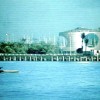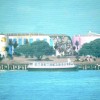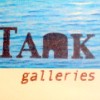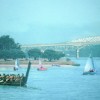
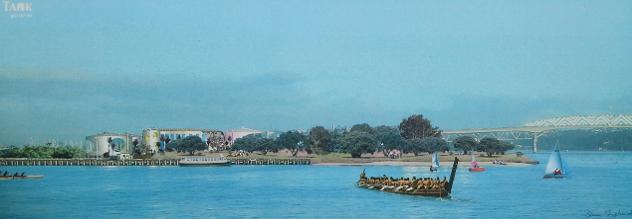
The Wynyard Peninsular
University of Auckland Lectureship Research Project
What if the best idea is also the cheapest?
1. The Silos - they're decontaminated and cleaned up. A competition is held to help decide how the silos are redefined with the brief being that they host art, sculpture, temporary installations and performances of various kinds at a local and international level, in and around them. Their unique cylindrical shapes are lit up in the evening — an evolving dynamic in terms of the wider city canvas, so at night they relate to the solar Tukutuku paneled lights on the harbour bridge.
2. The second element is the native flora and fauna. There is a pest proofed fence at the base of the peninsular. This involves an automatic sliding gate as at Tawharanui DOC Park that operates without fuss. So as the nikau, pururi and pohutukawa trees grow, the peninsular fills with the unique sounds of native NZ birds. It lies on the birds' flight path between the Waitakere ranges and the Gulf islands reserves.
3. The third element is food. Kiosks are sprinkled throughout the park — discreet, integrated and flexible. The offerings are healthy and affordable because modern kiosk food requires little infrastructure and has much lower overheads. They sustain the visitors and prolong their stay and enjoyment — especially non upper middle-class families.
4. The last element is of course the water. The beach doesn't need to be tidal and could circumnavigate the end of the peninsular, collecting amazing and unrealised views. There's the sunsets and boat watching, not to mention all the other possible activities on a lively urban beach. Classic ferries carry people to other harbour destinations (Chelsea Point, Fishermans Table, Rangitoto etc) from the existing Wynyard Wharf. Otherwise there is only non motorised craft ~ waka ama and traditional Maori waka, but also windsurfers, stand up paddling and The Peter Blake Memorial P Class Fleet.
This is about creating an authentic, breathing cultural heart that generates economic morale from the harbour concentrically out through the suburbs. It is the original, unique NZ experience in the centre of a generic concrete jungle.
Business will bask in it and so will our reputation. Tourists will stay in Auckland days and nights longer to experience primordial NZ with contemporary city comforts close by.
The entire economy benefits rather than just the usual suspects.
The highline project in New York has recently used a similar approach to that citys' defunct industrial structures. It has quickly become New York Citys' fastest growing tourist attraction and a midus touch for business and real estate in the area. The architect most associated with that project was in Auckland in 2010. Charles Renfro was interviewed on TV3 (8/5/10) about Aucklands' architecture and looking out over the skyline he inferred that it was polite, but dull. In reply to the journalists question about what could be done to lift Aucklands' global game he said "I love all these tanks. I think the tanks could be renewed and turned into some amazing architecture if they were cleaned up and detoxified. You could imagine theaters in there, you could imagine performing art spaces, you could imagine art"
That was 7 years after the first of many presentations of this idea to Auckland City Council.
They have responded with the highly successful Silo Park - popular despite it being tiny and landscaped without views into a flat grid.
They lit up the harbour bridge with solar paneled lights using the geometry of the arches, but failed to take the obvious next step by consulting Tangata Whenua on how to spectacularly celebrate our Maoritanga.
Imagine if they went all the way.

